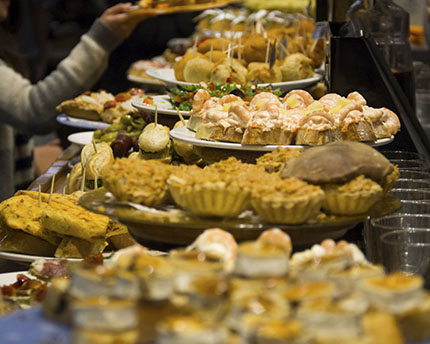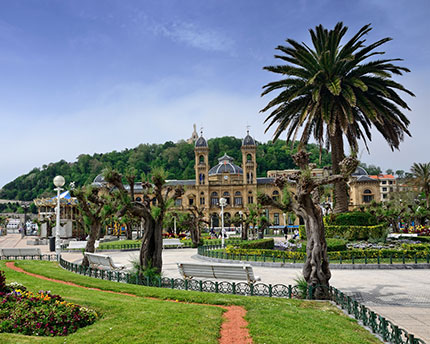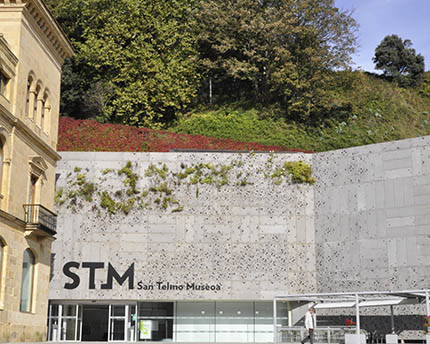Parte Vieja
The old town or Parte Vieja is a small network of narrow streets sitting below Monte Urgull. It has much to offer: here is where you’ll find some of the best pintxo bars, gastronomy clubs and restaurants in San Sebastián, not to mention pretty shops and noteworthy religious buildings and museums.
The layout of the old town is the result of reconstruction works following the fire of August 31st 1813, when Anglo-Portuguese troops besieged and burned it down. According to the history books, only 30 of the 600 original houses were saved. The Neoclassical Plaza de la Constitución is the epicentre of the neighbourhood and one of the best testaments to the city’s resurgence. The architect behind it, Pedro Manuel de Ugartemendía, played an important role in rebuilding the city. It’s one of those charming spots where it really is worth grabbing a chair in one of the terrace bars and sipping a drink while you get a feel for the place. The plaza no longer houses the Town Hall but is still one of the most symbolic areas of the Basque capital. It hosts important events including the opening ceremony for the annual Tamborrada celebrations.
Exiting the plaza along Calle del Puerto takes you to Calle Mayor. Look to the right to admire the beautiful Baroque facade of the Basílica de Santa María del Coro. To the left, in the distance, is the Neogothic tower of the cathedral. Those interested in religious heritage should also visit the Gothic Iglesia de San Vicente. Alongside this church is the San Telmo Museum, housed within a 16th-century Dominican convent that now coexists with a cutting-edge building by the architectural firm Nieto Sobejano. The groundbreaking aesthetic showcases the urban renewal seen over recent years in the city. The building now houses the Museo de Sociedad Vasca y Ciudadanía (Museum of Basque Society).
From the Plaza Zuloaga, outside the museum, you can pick up one of two trails that climb Monte Urgull. It’s a great place for taking a walk and enjoying some of the best views over the Cantabrian Sea and the city, from various vantage points. The peak is crowned by the Castillo de la Mota and, on top of that, the Sagrado Corazón, a 12-metre statue of Jesus created by Federico Coullaut which has gazed down upon the city since 1950. It’s now one of the most emblematic images of San Sebastián.
After exploring Monte Urgull, take the path that descends to the Paseo Nuevo. On rough days the waves crash against the shore creating a magnificent natural spectacle (it can be dangerous, so don’t get too close). The Paseo Nuevo skirts the bottom of Monte Urgull and is also the site of the sculpture titled Construcción vacía (Empty Construction) by the Basque artist Jorge Oteiza. It appears to stand in a far-off dialogue with Eduardo Chillida’s Peine del viento (Comb of the Wind), situated at the other end of the bay.
Complete your tour of the old town in the Port of San Sebastián. If you have any energy left, stop in at the Aquarium to experience one of the most modern marine museums in Europe. It’s fun for all ages!
Nearby plans
Related plans

San Sebastián’s old town: the heart of the Basque capital
San Sebastián’s old town was the birthplace of the Basque capital. Today, it’s a tourist hotspot.

San Sebastián Town Hall: history, art and grandeur
The Town Tall of San Sebastián occupies the magnificent Gran Casino building that was once a magnet for the European aristocracy.

San Telmo Museoa: a walk through Basque history and culture
Come discover the rich Basque patrimonial heritage at San Telmo Museoa through riveting collections in a 16th century monastery with an avant-garde touch.


